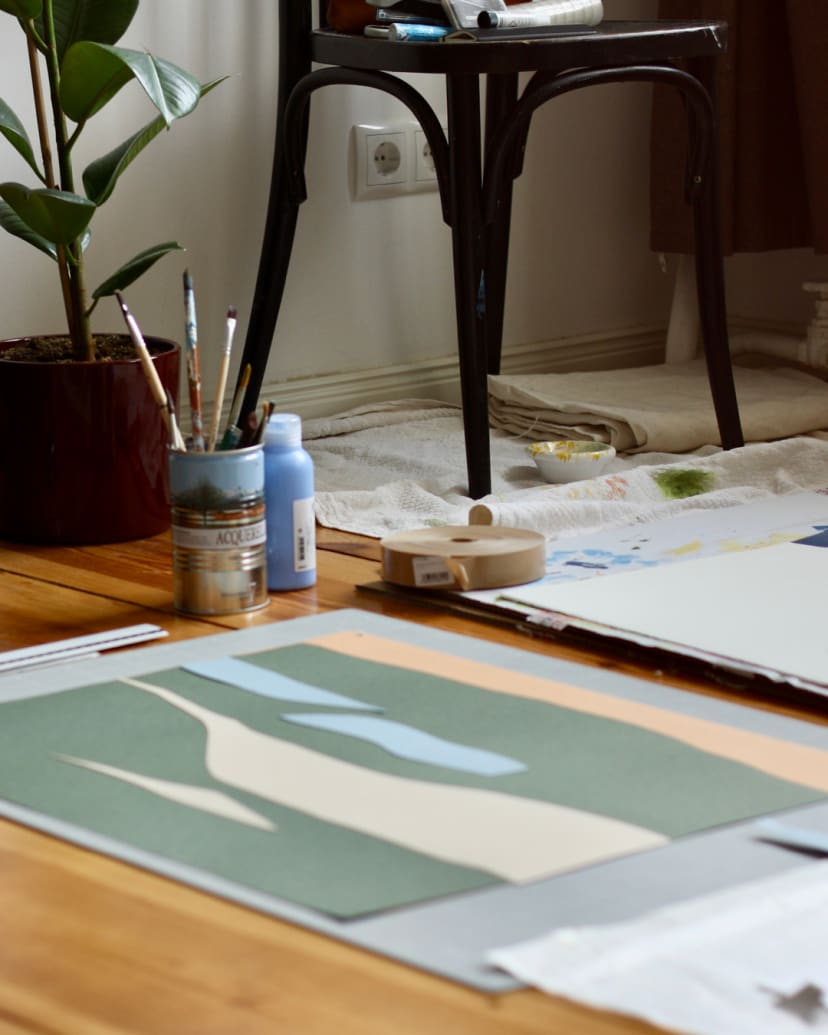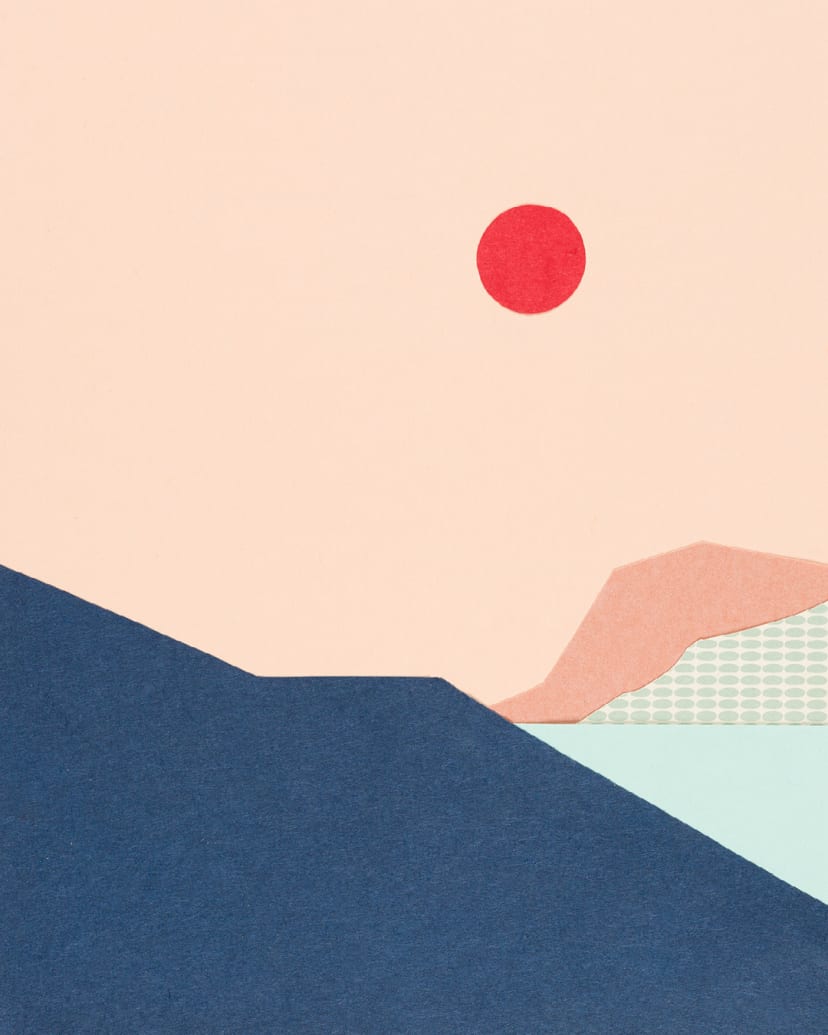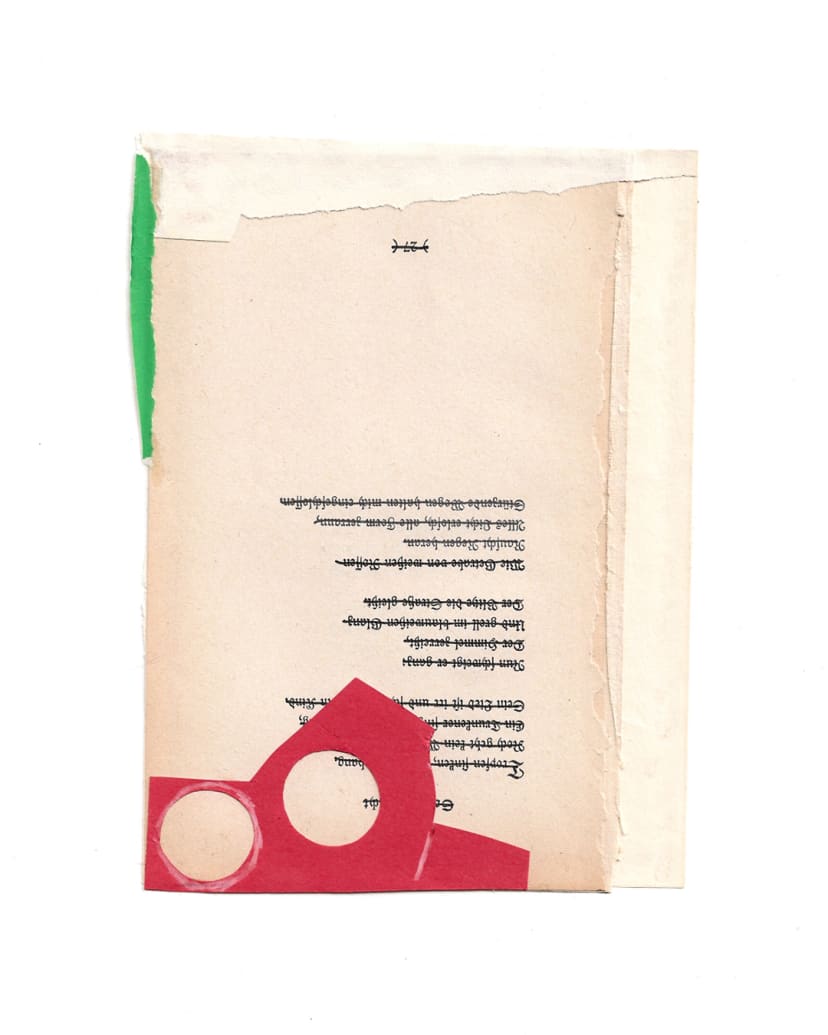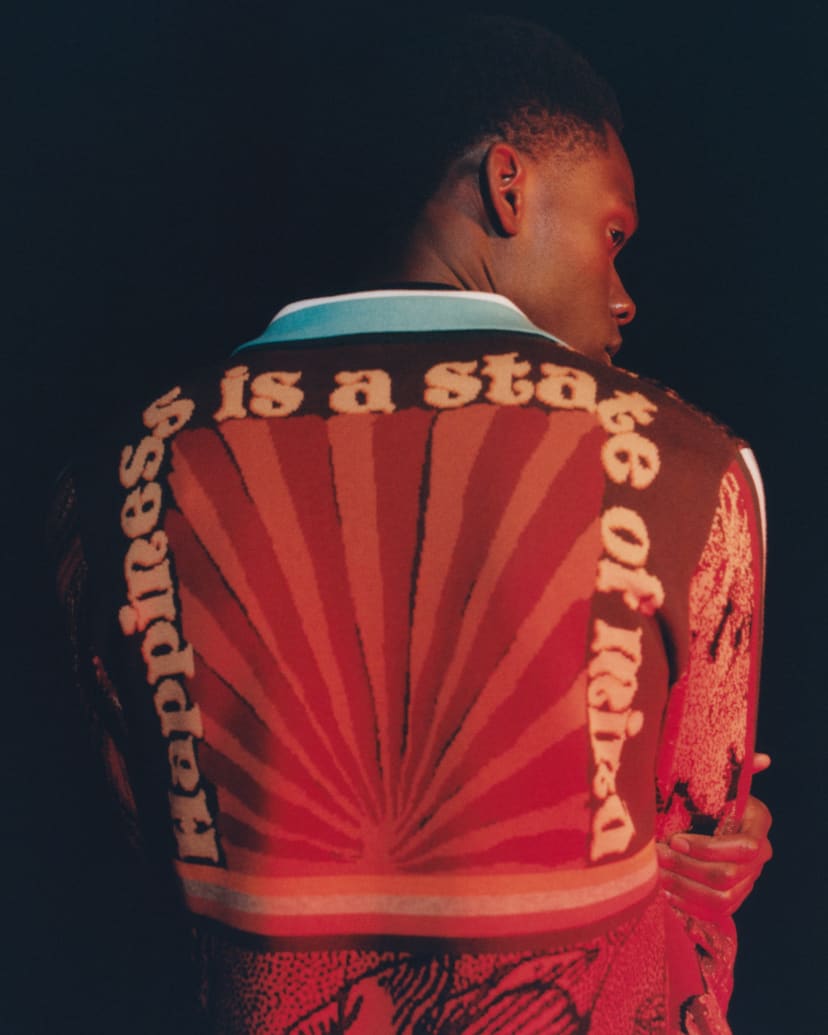
Portrait Of The Artist: Alessandra Weber

Self-taught artist Alessandra Weber – whose exhibition ‘Safe Spaces’ is now open at Paul Smith Hamburg – talks minimalism, overcoming fears of expressing yourself and why working slowly, in total silence, is her secret.
Though based on scenes of daily life, there’s no obvious way of knowing the place or setting of each work, which lends them a moving universality. Take the globe-like object often present her pieces: is it a sun, the moon, a planet or even earth? “I don’t know,” Alessandra says. “I think it gives a real and surreal atmosphere to the collages. Maybe something ethereal. It is surreal, but also palpable and light. [It represents] a life without time. It makes the collages timeless.”
I hope people can fall into a sort of meditative state. To be at one with the colours and shapes.
Alessandra Weber

FIGURE IV: ALESSANDRA AT WORK IN HER STUDIO.
Using diverse materials – which includes paper, acrylic and inks – a lack of professional training has allowed her more freedom in her work. “Self-taught artists learn as children do. I don’t feel this pressure of having to do perfect things,” she says. The exhibition has also afforded her the opportunity to experiment with bigger scales. “Working on large formats intensifies the feeling of becoming one with the work,” Alessandra explains. In fact, how she feels making her pieces – an overwhelming sense of calm and peace – is what she hopes people experience when they view them. “I hope people can fall in a sort of meditative state,” she says. “To be at one with the colours and shapes.”
FIGURE IV: ALESSANDRA AT WORK IN HER STUDIO.
Why did you become an artist?
When I was young, I wanted to study fine arts, but becoming an artist felt like something you shouldn’t take too seriously. Today, I teach at the Berlin University of the Arts. Getting in touch with art students and visiting ateliers inspired me very much. At the beginning of the pandemic, the world got still and I began to make collages while writing my thesis on the phenomenology of touch. It was a time of meditation, cosiness and creativity. That was the first time I thought about being an artist and taking it seriously.
Where do you find inspiration?
I find inspiration from materials and colours, from their sensuousness. When I do something with them, they do something to me. Being inspired, for me, means resonating with someone or something. I find inspiration in the emptiness of doing nothing. I need to do nothing for a while to do something new. I also find inspiration from nature. It makes me feel connected. I feel inspired when I feel touched by the world. I understand Inspiration as a form of immediate perception.
How would you describe your work?
Minimalistic, atmospheric, quiet. Minimalism allows me to practice minimal perception, to catch details, to explore belonging, connection and resonance.
Why do you work primarily in your medium?
I primarily work with paper, and especially love cotton watercolour paper. I also work with acrylic, coloured pencils or ink on paper.
What do you hope people take away from your art? What are you trying to say?
I hope people feel “called” and touched by something in my art. Not a meaning, but an experience of the body: a sensuous experience of emotions.
How does being an artist affect your outlook on life?
I’m more courageous in expressing myself. It helps me to overcome my fear of doing it.


FIGURE V: COLLAGE MATERIALS. FIGURE VI: WORDS YOU DON’T SAY ANYMORE
How do you feel while you’re working? What’s going through your mind?
I feel calm, connected with my body and full of impressions, but in some way also empty, because I don’t really think. I have no words in my mind, but impressions, feelings and colours. It feels free and light.
Do you have a particular routine or any “rituals” when you’re working?
I love to work in silence. To be alone in silence and drink jasmine tea are maybe the only rituals I have. But sometimes I get fixed on a song and play it out over and over, like a mantra. I love to work slowly and take breaks – or to be so absorbed in something that I forget to eat.

FIGURE VII: ALESSANDRA’S STUDIO.
What does your typical working day look like?
I love to wake up early in the morning and have the whole day for making art – without any other appointments. Usually, I just look at the materials, the colours and think about new shapes for my landscapes. I am not good at preparing, sketching or planning. I just stop thinking and start doing. Sometimes it takes a very long time before a work feels finished, sometimes it takes few minutes. On sunny days I go walking in the woods with my sketch book. It calms and inspires me.
If you weren’t an artist, what would you do and why?
I would be a writer. I understand language as living, sensuous matter. When I write about something, I also create something in a way, and I am part of it.
FIGURE VII: ALESSANDRA’S STUDIO.
We're sorry, Alessandra Weber artworks have sold out.
Discover More
Do you want to keep in touch?









